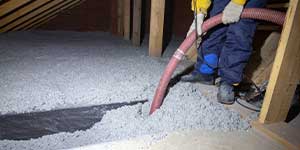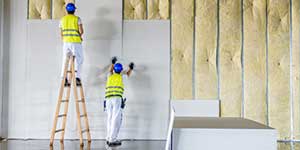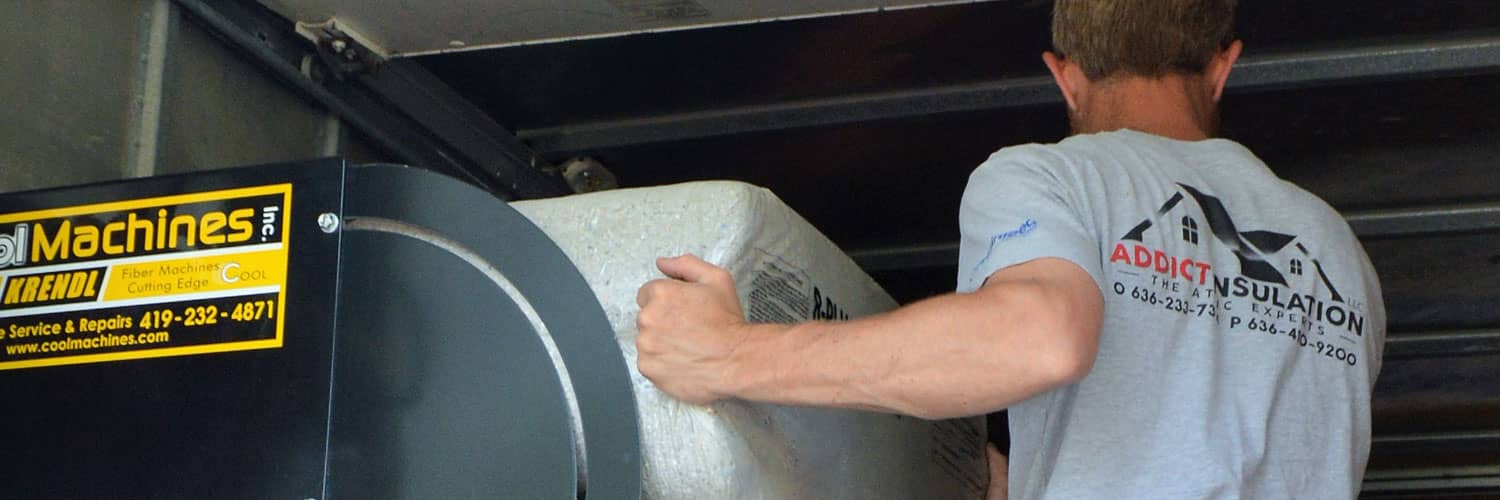St Louis - St Charles Insulation Company.


Preparing Insulation For Installion
Insulating your attic is imperative. Not only does this save you money on energy, it makes you feel more comfortable throughout the year thanks to consistent temperatures. But it’s equally important to insulate your attic the right way, and that involves the proper prep work. Your insulation contractor in St. Louis MO will do their best to prepare the area, but there are ways you can help them out prior to the beginning of work.
Clean Up the Attic
The best thing you can do to prepare for attic insulation installation is to de-clutter, organize and clean the attic. Not only does this provide your contractor with better access to walls, floors, ceilings and other pertinent areas, it gives you a chance to clear out the attic in an effort to increase ventilation later on. Everyone needs to de-clutter their attics periodically, and an insulation project is the perfect opportunity for this.
Having a cluttered attic doesn’t allow your insulation and vents to do the best possible job. Make it easier on your home and on your contractor, and do your part to clean up beforehand.
Seal Air Leaks
Air leaks in your attic will be counterproductive to installing even the highest quality insulation possible. You can do this yourself with the use of expanding spray foam and caulk. Look for gaps around pipes, windows, ducts and the chimney. Caulk can be used on tiny cracks but if you see holes and cracks larger than 1/4 inch wide, spray foam is a better choice.
Check for Water Leaks
At the same time that you’re looking for air leaks, check for water leaks. Be on the lookout for water stains, damp areas and missing shingles on the roof. Water and insulation don’t go well together. Damp or saturated insulation will invite the growth of mold and block the flow of heat. By addressing water leaks before you add more insulation, you’ll be ensuring a safer, more productive area with which to work.
Box Out Light Fixtures
If you have light fixtures, box them out to reduce fire hazards. Create a gap of three inches from your lights to where your contractor will be placing the insulation. To achieve this, use metal flashing, scrap plywood or hardware cloth.
Check Exhaust Fans
Your exhaust fans should be facing outside so no humidity is caught in your attic. Whether your fans were improperly installed initially or they were knocked loose over time, make sure those fans are pointing the way they should.
A successful insulation installation starts with the right preparation. Your insulation contractors should be able to help with some of this, but the cleanup (step one) is definitely your responsibility. Don’t skip it!
Call Addict Insulation in St. Charles MO
Partnering with insulation contractors in St. Louis MO who are skilled in start-to-finish jobs (including prep work) is key to a successful installation. Contact us today for a consultation at 636-233-7314.
Energy Saving BlogPopular Articles
- FAQs About Insulation in Missouri
- What Areas Should You Insulate Before Winter?
- The Greatest Risks to Your Home Caused by Poor Insulation
- Why Your Utility Bills Are So High and What You Can Do About It
- Can You Put New Insulation Over Old?
- Here Are 3 Ways Your Attic Could be Contaminated
- How Home Insulation Works in the Summer
- Tips and Tricks For Summer Insulation
- How to Fix Indoor Condensation
- Choosing the Right Spray Foam Contractor
- Why You Need Power Washing This Spring
- Don't Let Air Escape Your Home
- Tips For Saving on Your Energy Bills This Summer
- Should I Install a Radiant Barrier in My Home?
- Are You Wondering if Your Attic Has Enough Insulation?
- Do I Have to Replace Wet Insulation?
- Insulating Your Sunroom
- Should You Insulate Your Outdoor Spaces?
- All About Removing Insulation
- What to Know About Insulating a Crawl Space
- How to Spot Mold in Your Wall Insulation
- How to Prevent Moisture in Your Warehouse With Spray Foam Insulation
- What Factors Cause Heat Gain?
- The Problems That Come With Improper Insulation
- Insulation FAQs
- Why Should You Check the Insulation When Buying a Home?
- Why Seal and Insulate Your Home?
- Home Insulation: Safety and Health
- Should You Remove Old Insulation During Replacement?
- Can I Stay Inside My Home During Spray Foam Insulation Installation?
- Pros and Cons of Converting an Attic
- Pros and Cons of Converting an Attic
- When’s the Best Time to Insulate Your House?
- The Difference Between Blown Insulation and Spray Foam Insulation
- Is Your Garage Loft Too Hot or Too Cold? Heed These Tips
- 6 Health Benefits of Having a Quiet Home
- Insulation Prep is Critical For Installation
- The Dangers of Removing Insulation on Your Own
- What’s the Most Eco-Friendly Insulation?
- 7 Benefits of Spray Foam Insulation
- What is the Proper Insulation For Vaulted Ceilings?
- Signs Your Crawlspace Insulation Should be Replaced
- Why You Should Insulate Your Basement Walls
- Most Effective Ways to Soundproof Your Home Office
- How to Insulate an Old House
- 4 Tips to Make Your Attic More Energy Efficient
- Attic Insulation Problems: 5 Things to Look Out For
- What Causes Condensation on Interior Walls?
- How Deep Should Your Insulation Be?
- What to Consider When Choosing an Insulation Company
- Can You Add New Insulation Layers Over Old Ones?
- When Should You Remove Insulation?
- 7 Tips For an Energy Efficient Summer
- Creating a Healthy, Comfortable and Productive Workspace When Working From Home
- Why is Roof Ventilation Just as Important as Insulation?
- Why Spring is a Good Time to Insulate Your Attic
- 5 Signs of Damaged or Insufficient Insulation
- Is the Insulation in Your Walls Making You Sick?
- Under-Insulated Areas You May Be Overlooking
- The History Of Insulation.
- Pros and Cons of Attic Insulation
- Do You Need Insulation When Finishing a Basement?
- What is Drill and Fill Insulation?
- Which Insulation is Best for Garage Walls?
- How Air is Escaping Your Home and How to Prevent It
- 10 Things You Must Absolutely Insulate Before Winter
- 5 Reasons To Not DIY Insulation
- 5 Signs of an Under-Insulated Home
- 5 Benefits of Blown Insulation
- Cellulose vs. Fiberglass Insulation
- When is Insulation Removal Necessary?
- Tips to Keep Your Home Cool This Summer
- What is the Best Insulation for a Flat Roof?
- 5 Benefits of Power Washing
- Q & A About Insulation
- Reviews
- Energy Saving Blog






